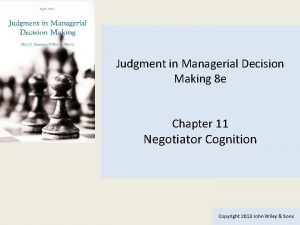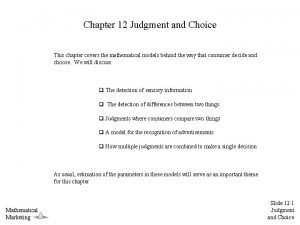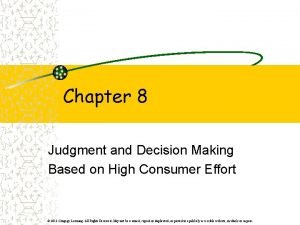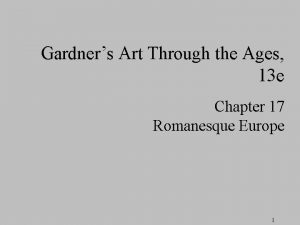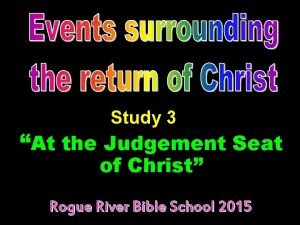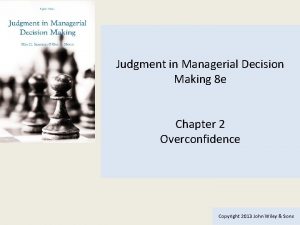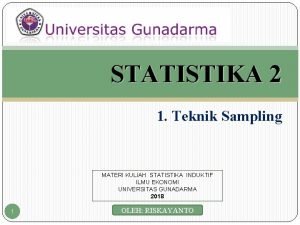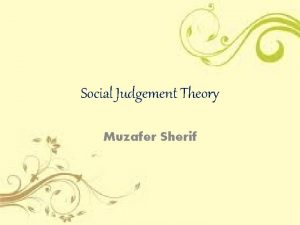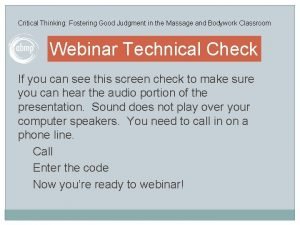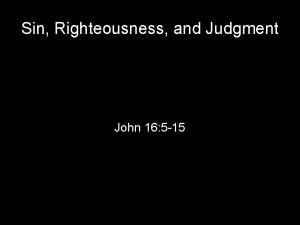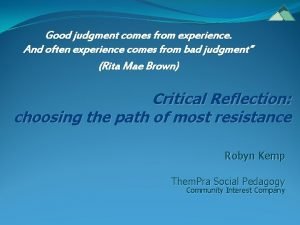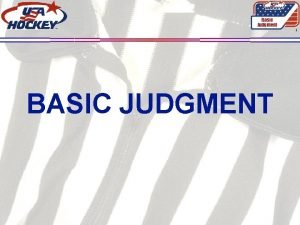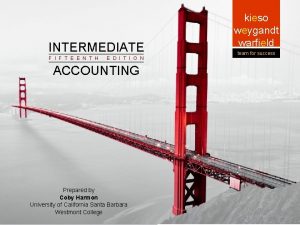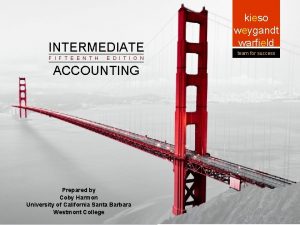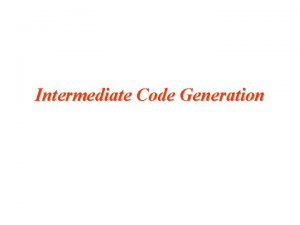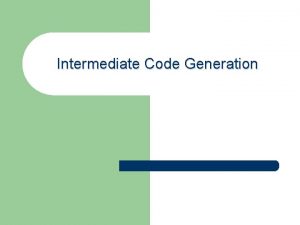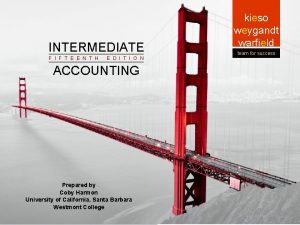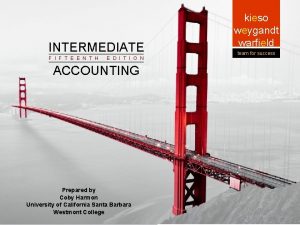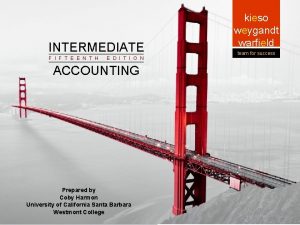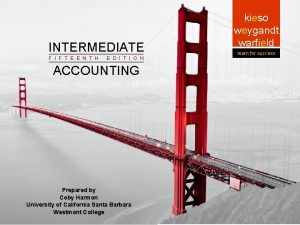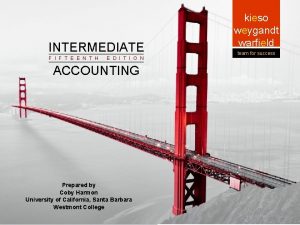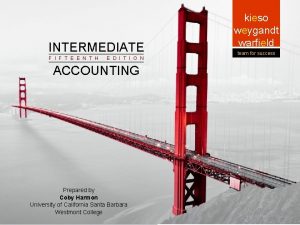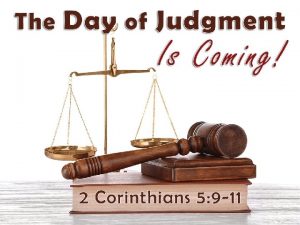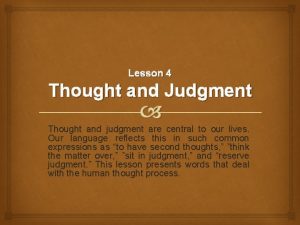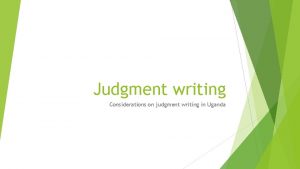Intermediate Judgment 1 INTERMEDIATE JUDGMENT JUDGMENT Intermediate Judgment





















- Slides: 21

Intermediate Judgment 1 INTERMEDIATE JUDGMENT

JUDGMENT Intermediate Judgment 2 Definitions o An authoritative or official decision based on laws, rules, or regulations o A judicial decision, especially one setting punishment o A position arrived at by reasoning o The ability to make sensible decisions

FOUNDATIONS OF GOOD JUDGMENT o Knowing and understanding: • • • o The playing rules The “spirit and intent” of each Playing Rules interpretations • Playing Rule Casebook • Penalty guidelines • Standards of Play and enforcement standards for restraining fouls and body checking Game Experience Intermediate Judgment 3

LEVELS OF JUDGMENT Intermediate Judgment 4 o Line calls are usually considered “black & white” calls • o At younger and less-skilled levels, penalty calls also tend toward black & white judgment. • o The infraction either occurred, or it didn’t Infractions that should be penalized tend to be obvious For older age groups and higher skill levels, officials' decisions tend to move beyond the obvious, and become more subtle or “gray”

THE DECISION "BOX" Intermediate Judgment 5 "Out of the Box" "In the Box"

ENFORCEMENT GUIDELINES Intermediate Judgment 6 o Consistent with the USAH Standard of Play, a penalty must be called whenever any player action meets any of these criteria • • • o Flagrant or obvious Injury potential Fouls committed to intimidate an opponent Body checks delivered for any purpose other than separating an opponent from the puck Unfair change of possession or control (turnover) through unfair advantage gained Unfair loss of legitimate scoring opportunity through unfair advantage gained The objective of the Standards of Play is to reward skilled players by not allowing opponents to gain a competitive advantage by using illegal or intimidating tactics

INJURY POTENTIAL FOULS Intermediate Judgment 7 o The “Big Four” • • Butt Ending Spearing Head Butting Grabbing the Facemask • • ALWAYS A PENALTY! • • • o Includes using the hand to rub, grab, or hold the facemask in any way There is no gray area Major plus game misconduct Match penalty There is no minor penalty option Deliberately removing helmet (including an opponent’s helmet) prior to or during an altercation • Match Penalty

STANDARD OF PLAY Body Checking The sole purpose of a body check is to separate an opponent from the puck o Only the area between the hips and shoulders can be used to deliver a body check o A body check must be delivered only in the area above the knees and below the shoulders of an opponent o Players who gain a positional advantage over an opponent as a result of a body check cannot be penalized if the check was delivered within the rules o In addition to the body checking standard, players must also be held accountable for all other isactsalways of an intimidating or dangerous The onus on the checking player tonature. deliver a o check within the meaning and intent of this standard Intermediate Judgment 8

PENALTY OPTIONS Body Checking and Aggressive Fouls o Boarding, charging, checking from behind, head contact: • Minor plus misconduct or Major plus Game Misconduct • There is no minor penalty option • o Body Checking in a body contact or adult no-check classification, Cross-Checking, Elbowing, Kneeing, High Sticking, Slashing: • • • Minor or Major plus game misconduct (if injury to an opponent results) Intermediate Judgment 9

ENFORCEMENT STANDARDS Body Checking and Aggressive Fouls Intermediate Judgment Body Checking o • Making deliberate physical contact with an opponent with no effort to legally play the puck. • Using overt hip, shoulder or arm contact with the opponent to physically force them off the puck. • Physically impeding the progress of the opponent with hips, shoulders or torso without establishing legal body contact and having no intent of playing the puck. Boarding o • Accelerating through the check to a player who is in a vulnerable position off of the boards that causes them to go violently into the boards. • Driving an opponent excessively into the boards with no focus on, or intent to play, the puck. • Any other infraction (tripping, cross-checking, charging etc. ) that causes the opponent to go violently and excessively into the boards Charging o • Running or jumping into the opponent to deliver a check. • Accelerating through a check for the purpose of punishing the opponent. • Skating a great distance for the purpose of delivering a check with 10

ENFORCEMENT STANDARDS Body Checking and Aggressive Fouls Intermediate Judgment Checking From Behind o • • Checking an opponent in open ice directly or diagonally from behind Checking or pushing an opponent from behind directly into the boards or goal frame Head Contact t • • Delivering a check with any part of the body that makes direct contact with the head or neck area Using the forearm or hands to deliver a check to the head or neck area 11

ENFORCEMENT STANDARDS Body Checking and Aggressive Fouls Intermediate Judgment Roughing (short of altercations) o • Engaging in unnecessary contact in the vicinity of the goal crease after a whistle • Delivering an avoidable check to a player who no longer has control of the puck because of a pass or shot (“finishing” the check”) Slashing: o • The use of the stick is limited to only playing the puck. • Any stick contact as a result of a slashing motion to the hands/ arms or body of the opponent will be strictly penalized. • In addition, hard slashes to the upper portion of the stick (just below the hands) of an opponent, with no attempt to legally play the puck, shall also be penalized. 12

STANDARD OF PLAY Restraining Fouls o o o The ONLY legal way to use a stick is to play the puck. Players cannot use their sticks to impede an opponent’s progress (Hooking). A player cannot use a free hand or arm to grab an opponent or impede an opponent’s progress (Holding). Officials must ensure that a player who has gained a positional advantage because of anticipation, skating ability, or other physical skills does not lose that advantage because of illegal acts committed by an opponent (Interference). In addition to restraining fouls, players must also be held accountable for other all acts of an intimidating or dangerous nature. Intermediate Judgment 13

PENALTY OPTIONS Restraining o o Fouls Hooking, Tripping/Clipping/Leg Checking/Slew Footing • Minor or • Major plus game misconduct (only if injury results) Interference and holding (other than grabbing or rubbing the face mask) • Minor only Intermediate Judgment 14

ENFORCEMENT STANDARDS RESTRAINING FOULS Intermediate Judgment 15 Tripping/Clipping/Leg Checking o • Placing the stick in front of the opponent’s legs for the purpose of impeding progress, even if on the ice, with no effort to legally play the puck • Placing the stick between the legs of the opponent (“can opener” or “corkscrew”) that causes a loss of balance or impedes the progress of an opponent. • Attempting to take an opponent out of the play by extending a foot behind an opponent's foot and attempting to push him/her over (slew footing ). Hooking o • Tugging or pulling on the body, arms or hands of the opponent in order to “close the gap” between the players • Placing the stick in front of an opponent’s body and “locking on” – impeding progress or causing loss of balance • Placing a stick on the hand or arm of an opponent that takes away the opponent’s ability to pass or shoot the puck normally

ENFORCEMENT STANDARD RESTRAINING FOULS Intermediate Judgment Holding o • Wrapping one or both arms around the opponent along the boards in a manner that pins them against the boards and prevents them from playing the puck or skating. ( Pinning an opponent against the boards using body position ONLY remains legal) • • Grabbing an opponent’s body, stick, or sweater with one or both hands Using a free arm or hand to restrain or impede an opponent’s progress Interference o • • • Intentionally playing the body of an opponent who does not have possession or possession and control of the puck. Using the body to establish a "pick" or "block" that prevents an opponent from being able to chase a puck carrier Reducing foot speed or changing an established skating lane for the purpose of impeding an opponent who is attempting to chase 16

NOTES ON JUDGMENT Intermediate Judgment 17 o Be alert for “diving” and other actions by players to induce penalties under these standards • There is no USA Hockey penalty for diving (The proper action in such situations is a “no-call”) o Defending players are generally entitled to “stand their ground” and use speed, strength, and body position to neutralize an opponent o Determining what is a legitimate restraining foul, and what is not, remains a key part of gray area judgment

GAME REPORTS Intermediate Judgment 18 o o An official who assesses any major, game misconduct, or match penalty must also submit a game report through the USA Hockey online Incident Reporting System. • This includes major penalties that do not also carry an automatic game misconduct penalty The narrative section of the report dialog does not need to be completed for any game report that involves only major penalties (i. e. , no related game misconduct or match penalties) Game Reports must be filed within 24 hours of the time the game ends Game reports are not required for minor or double minor penalties

ENFORCING SUSPENSIONS Intermediate Judgment 19 o o USA Hockey Affiliate Associations have sole responsibility for monitoring and enforcing player suspensions. Specific staff members within each Affiliate are assigned to monitor and enforce suspensions Game officials are responsible only for assessing appropriate penalties and have no authority to enforce suspensions. • Game officials may not remove suspected ineligible players from any game or assess any penalties A game report describing an official’s grounds for suspecting that a suspension is not being enforced must be promptly submitted to the governing Affiliate.

SUMMARY Intermediate Judgment 20 o Judgment requires mastery of the playing rules (rule book), interpretations (case book), and enforcement standards. o Level 2 officials must be able to understand the concept of “gray area” judgment and be able to apply the rules properly in a variety of situations. o Restraining foul and body checking enforcement standards fundamentally change the way the game is played -- and officiated. • The focus of the restraining foul and body checking standards is to reward speed, skating, and puck-handling skills • Defenders are still allowed to use speed, strength, and body position to neutralize an opponent • Be alert for “diving” (No-call but not a penalty). o Stand-alone major penalties and all game-suspending penalties (i. e. , game misconduct and match penalties) require submission of game reports through the USA Hockey online Incident Reporting System. o The enforcement standards narrow -- but do not eliminate -- gray area judgment.

Intermediate Judgment 21 QUESTIONS
 Judgment in managerial decision making
Judgment in managerial decision making Judgment chapter 12
Judgment chapter 12 Judgment chapter 8
Judgment chapter 8 Gislebertus
Gislebertus Judgment seat of christ
Judgment seat of christ Judgement in managerial decision making
Judgement in managerial decision making Contoh judgment sampling
Contoh judgment sampling Critical judgment and continuous monitoring are examples of
Critical judgment and continuous monitoring are examples of Theory of social judgement (sherif) menyatakan bahwa
Theory of social judgement (sherif) menyatakan bahwa Judgment massage
Judgment massage Helen daughter of zeus
Helen daughter of zeus Induction lesson
Induction lesson Pierre-auguste renoir the judgement of paris
Pierre-auguste renoir the judgement of paris Next gen clinical judgement model
Next gen clinical judgement model Sin righteousness and judgement
Sin righteousness and judgement Objectivity value judgment and theory choice
Objectivity value judgment and theory choice Jacob de backer last judgment
Jacob de backer last judgment Skill approach to leadership
Skill approach to leadership Clinical judgment definition
Clinical judgment definition Judge sarah vance
Judge sarah vance Good judgment comes from experience
Good judgment comes from experience What is righteous judgement
What is righteous judgement
